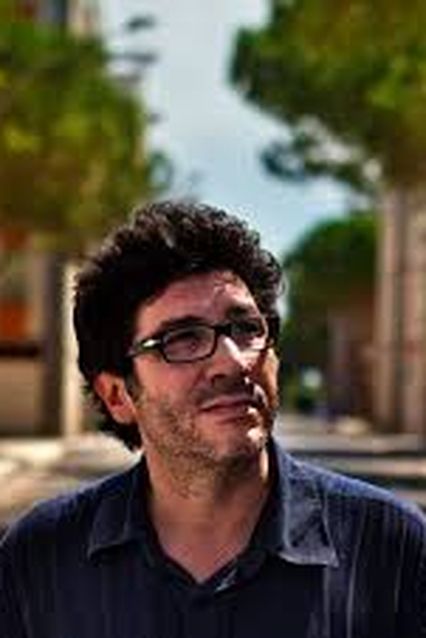The encounter between Steve Lacy and the pair Ciprì and Maresco dates back to 1996 when the two Palermo directors made the middle-length film, A memoria, against the background of whose images the American musician improvised with his soprano sax. On that occasion, Ciprì and Maresco shot a documentary video in which Steve Lacy himself tells the story of his debut in the world of jazz at first in the role of a photographer and then as a musician. He played Dixieland jazz with musicians of the caliber of Pee Wee Russell and Red Allen. He then tells of his first, fundamental experiences with his masters, Cecil Taylor and Thelonious Monk. On the invitation of Ciprì and Maresco, Steve Lacy returned to Palermo in 1999 to pay homage to Duke Ellington on the hundredth anniversary of his birth. In the video Lacy talks of the Duke's music and that of his band (leading off with Johnny Hodges). He tells of the enormous influence that the Duke had over modern jazz. The two directors feel particularly attached to Steve Plays Duke because they consider this short film a very important musical document, in which Lacy interprets, solo and without a rhythm section, ten classic pieces from the Ellington repertory. It turns out to be really exceptional again to hear the unmistakable sound of the most important saxophonist in contemporary international jazz.
Biography
film director

Daniele Ciprì
Daniele Cipri (Palermo, 1962) and Franco Maresco (Palermo, 1958) start working together in 1986, putting together "micromontages" using fragments from films and other short video works. Their Cinico TV shorts were aired on Enrico Ghezzi's Fuori Orario in 1990. These were followed by stints for Blob and Avanzi. Their first feature-length film, Lo zio di Brooklyn (1995) depicts the desolate urban sprawl of Palermo. Since then they made two more feature-lenght films: Totò che visse due volte (1998) and Il ritorno di Cagliostro (2003). They debuted in theatre in 2002 with Palermo può attendere for the Biennale di Venezia. In 2004 they presented in Venice their Come inguaiammo il cinema italiano - La vera storia di Franco e Ciccio.
FILMOGRAFIA
Il lato estremo del visibile (cm, 1986), Così (cm, 1989), Pasta e patate (1989), Mai (cm, 1989), Isole comprese (cm, 1990), Illuminati (1990), Loro di Palermo (cm, 1990), Omaggio a E. (cm, 1990), Più liberi con la mafia (1990), Seicortosei (1991), Addio o a rivederci (1991), Santa Maria (1991), Home (1991), Stanley's Room No. 1 e No. 2 (1991), Pel di carota (1991), Verso Vertov: frammenti necropolitani (1991), Martin a Little... (1992), Il corridoio della paura (1992), Muri (1992), Cani (1992), Keller (1992), Blob Cinico Tv (1992), Publimania (1994), Cielito lindo (1995), Lo zio di Brooklyn (1995), Grazie Lia - Breve inchiesta a proposito di Santa Rosalia (1996), A Memoria (1996), Totò che visse due volte (1998), Steve Plays Duke (1999), Noi e il Duca (1999), El sentimento cinico de la vida. Dieci anni di Cinico Tv (1989-1999) (1999), Ai Rotoli (2000), Il ritorno di Cagliostro (video, 2000), Tutti for Louis - Omaggio a Louis Armstrong (2000), Miles gloriosus (2001), Siamo davvero pietosi (2001), Il ritorno di Cagliostro (2003), Che fine ha fatto Pino Grisanti? - Ciprì e Maresco alla ricerca di un maestro incompreso (cm, 2003), Come inguaiammo il cinema italiano - La vera storia di Franco e Ciccio (2004), L'Opè incatenato (cm, 2004).

Franco Maresco
Daniele Cipri (Palermo, 1962) and Franco Maresco (Palermo, 1958) start working together in 1986, putting together "micromontages" using fragments from films and other short video works. Their Cinico TV shorts were aired on Enrico Ghezzi's Fuori Orario in 1990. These were followed by stints for Blob and Avanzi. Their first feature-length film, Lo zio di Brooklyn (1995) depicts the desolate urban sprawl of Palermo. Since then they made two more feature-lenght films: Totò che visse due volte (1998) and Il ritorno di Cagliostro (2003). They debuted in theatre in 2002 with Palermo può attendere for the Biennale di Venezia. In 2004 they presented in Venice their Come inguaiammo il cinema italiano - La vera storia di Franco e Ciccio.
FILMOGRAFIA
Il lato estremo del visibile (cm, 1986), Così (cm, 1989), Pasta e patate (1989), Mai (cm, 1989), Isole comprese (cm, 1990), Illuminati (1990), Loro di Palermo (cm, 1990), Omaggio a E. (cm, 1990), Più liberi con la mafia (1990), Seicortosei (1991), Addio o a rivederci (1991), Santa Maria (1991), Home (1991), Stanley's Room No. 1 e No. 2 (1991), Pel di carota (1991), Verso Vertov: frammenti necropolitani (1991), Martin a Little... (1992), Il corridoio della paura (1992), Muri (1992), Cani (1992), Keller (1992), Blob Cinico Tv (1992), Publimania (1994), Cielito lindo (1995), Lo zio di Brooklyn (1995), Grazie Lia - Breve inchiesta a proposito di Santa Rosalia (1996), A Memoria (1996), Totò che visse due volte (1998), Steve Plays Duke (1999), Noi e il Duca (1999), El sentimento cinico de la vida. Dieci anni di Cinico Tv (1989-1999) (1999), Ai Rotoli (2000), Il ritorno di Cagliostro (video, 2000), Tutti for Louis - Omaggio a Louis Armstrong (2000), Miles gloriosus (2001), Siamo davvero pietosi (2001), Il ritorno di Cagliostro (2003), Che fine ha fatto Pino Grisanti? - Ciprì e Maresco alla ricerca di un maestro incompreso (cm, 2003), Come inguaiammo il cinema italiano - La vera storia di Franco e Ciccio (2004), L'Opè incatenato (cm, 2004).
Cast
& Credits
Music: Duke Ellington e Steve Lacy.
Production company and Italian distribution: Cinico Cinema, via Leanti 5, 90141 Palermo, tel. e fax +30-091-6251946.

